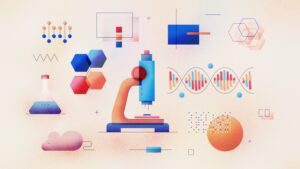We repeat it so often it begins to sound almost trite: the diversity of crops is vital for our future. The human population is growing, the land available for food production is decreasing, climate change imposes greater stresses on food production, non-renewable resources are becoming scarcer, and malnutrition remains a huge problem. How do we address the massive challenge? The answer lies in plant genetic resources for food and agriculture (PGRFA) conserved in situ and ex situ, which contain the building blocks that we can use to develop crops that are more nutritious, more productive, more tolerant of biotic and abiotic stresses, and less dependent on pesticides and fertilizers.
But identifying, finding and sustainably using these building blocks is almost unbelievably complicated. Each crop species has around 30,000 genes, producing thousands of biochemical compounds. We have still only touched the surface of understanding how they interact with each other over time to control the growth of the plant, how they contribute to a healthy diet, how they determine the response of the plant to pests, diseases, weeds, plant nutrients, extremes of temperature and moisture, soil microbes, soil structure and toxic compounds in the soil. Addressing each one of these issues is itself hugely complex. For example, each crop is affected by a whole set of pests and diseases, which evolve in unpredictable ways. The objective is not to seek a single ideal type of crop plant: variation in crops in time and space is an essential part of the sustainable solution, matching the diversity and changeability of communities and environments. Moreover, on finding a solution, we must ensure the benefits are shared equitably, reaching the poor who are most in need of these advances.
Scientists typically try to break down these big problems into smaller, scientifically tractable pieces, and may labour for decades to make progress. Knowledge about the potential value of a particular variety of one crop emanates from the studies of hundreds of farmers and consumers, using scientific or other approaches to knowledge generation. And this adds a new dimension to the grand challenge – how do we bring together all the diverse sources of knowledge about each variety?
Enter: the Global Information System (GLIS) of the International Treaty on Plant Genetic Resources for Food and Agriculture. For the first time, the GLIS seeks to bring together information on PGRFA – where and how they are maintained, what their characteristics are, and how they could be sustainably used – from a wide range of different sources.
Rather than seeking to compile all relevant information in one place, the GLIS will build on existing information systems, helping them become inter-operable and, thus, more accessible.
The big challenge of bringing together information from different sources is that the information is gathered in different ways and stored in different ways in different data management systems. Fortunately, databases can now be made to talk to each other, even if they are designed in different ways as long as they have a common “language” for communicating with each other. The GLIS will make this interoperability among databases possible by providing a common agreed syntax to transmit and receive information.
[tweetshare tweet=”Databases with information on PGRFA can now be made to talk to each other.” username=”EuropeanSeed”]
For this to work, there are some basic requirements, an underlying framework on which all other functionality depends:
- Each sample of PGRFA in the GLIS must be uniquely, globally and permanently identified, using an appropriate, agreed form of identifier;
- Users of the GLIS must be able to trace the physical material of the PGRFA from core metadata associated with its identifier;
- Users must be able to find data, information and knowledge associated with the PGRFA; and
- Users must be able to find related PGRFA material (derivatives, ancestors, siblings).
Perhaps surprisingly, until GLIS discussions started, there wasn’t even an agreed system to identify PGRFA and the relationships between PGRFA globally. This has been a major barrier to collaboration; partners in a network, working on related PGRFA must be able to unambiguously identify related samples held by other partners in the network. Given this fundamental need, GLIS has prioritised the streamlined exchange of PGRFA between partners, so that each recipient of PGRFA can easily and accurately identify, in the recipient’s own database, the precise material received from the provider.
Digital Object Identifiers (DOIs, which are Digital Identifiers of Objects, not Identifiers of Digital Objects), have now been selected as the permanent unique identifier of choice. The Secretariat of the International Treaty has set up a mechanism to allow anyone to acquire DOIs to identify the PGRFA that they manage. A small step forward, but a vital one, one that has never been undertaken before.
[tweetshare tweet=”The GLIS is small but vital step forward, one that has never been undertaken before.” username=”EuropeanSeed”]
With this vital step, the GLIS opens up a whole new world of new opportunities to collaborate in building up knowledge of PGRFA through connecting databases developed by diverse stakeholder groups. Contracting Parties to the International Treaty will be empowered to meet their obligations to share benefits through the exchange of information, and beyond that to achieve the Sustainable Development Goals especially on poverty, hunger and climate.
# # #
Dr Ruaraidh Sackville Hamilton is currently Head of Genetic Resources Center, International Rice Research Institute (IRRI), Philippines, a position he has held since 2002. Dr Hamilton has over 40 years of experience in plant genetic resources, starting in 1974, when he characterized variation in a collection of common bean varieties, Phaseolus vulgaris. His experience includes the design and development of databases for genetic resources collections and plant breeders, analyses of complex data including phenotypic, genomic and ecogeographical data, designing systems for more effective management of genebanks and material transfers, enhancing the conservation and sustainable use of plant genetic resources, and genetic resources policy. Dr Hamilton has held a number of positions in the past, including as Head of UK National Forages Genebank & Biodiversity Leader, Institute of Grasslands and Environmental Research; Senior Research Fellow at the University College of North Wales and, before that, at Centro Internacional de Agricultura Tropical in Colombia. He holds a PhD from the University of Cambridge, England.












